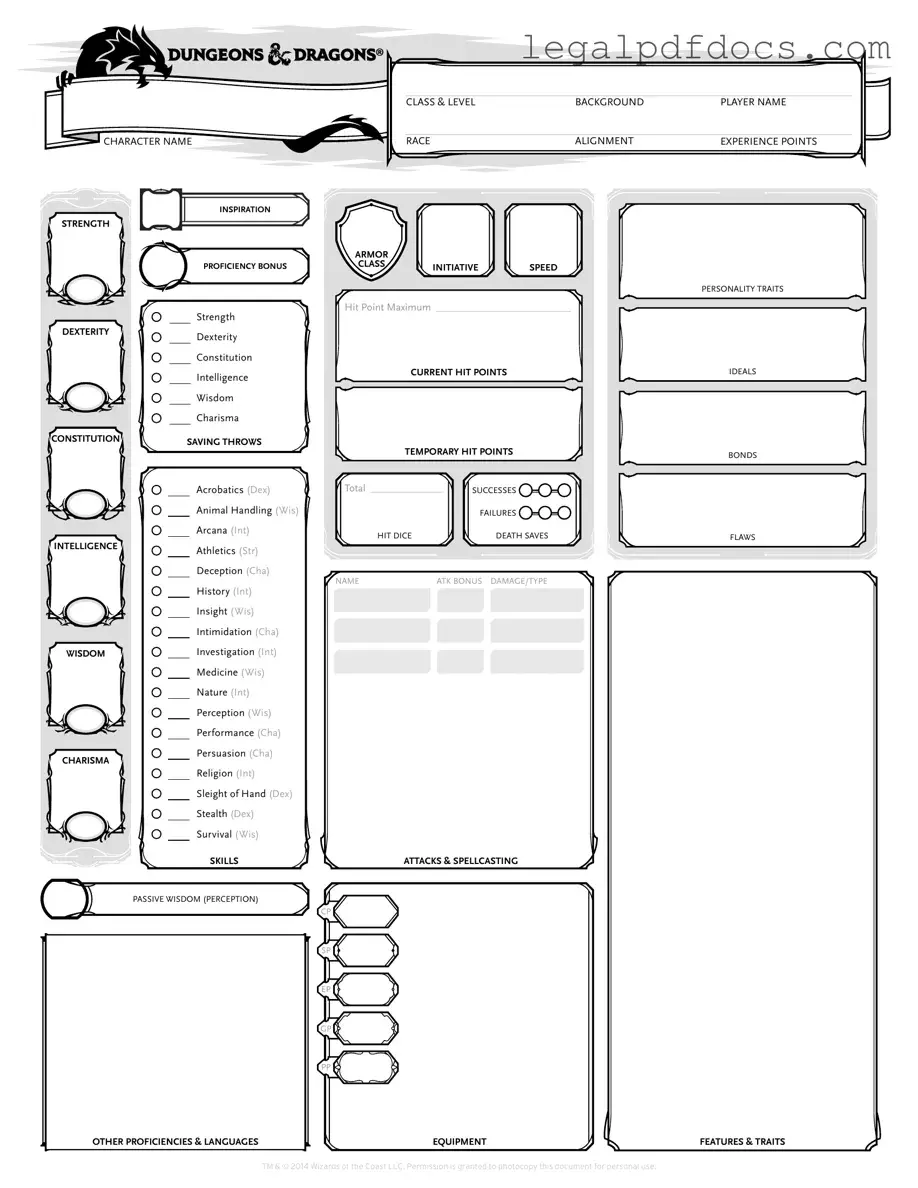Creating a character in Dungeons & Dragons (D&D) is an exciting journey that allows players to explore their creativity and immerse themselves in fantastical worlds. At the heart of this adventure lies the D&D Character Sheet, a vital tool that encapsulates all the essential details of a player's character. This form includes key elements such as the character's name, race, class, and background, which together shape their identity and abilities. Additionally, players will find sections dedicated to their character's statistics, including strength, dexterity, and intelligence, which determine how they interact with the game world. The sheet also tracks hit points, armor class, and skills, providing a comprehensive overview of the character's strengths and weaknesses. Furthermore, it includes spaces for spells, equipment, and features unique to each class, ensuring that players have everything they need at their fingertips. Overall, the D&D Character Sheet serves as both a reference guide and a canvas for storytelling, enabling players to bring their characters to life while navigating the challenges and triumphs of their adventures.
